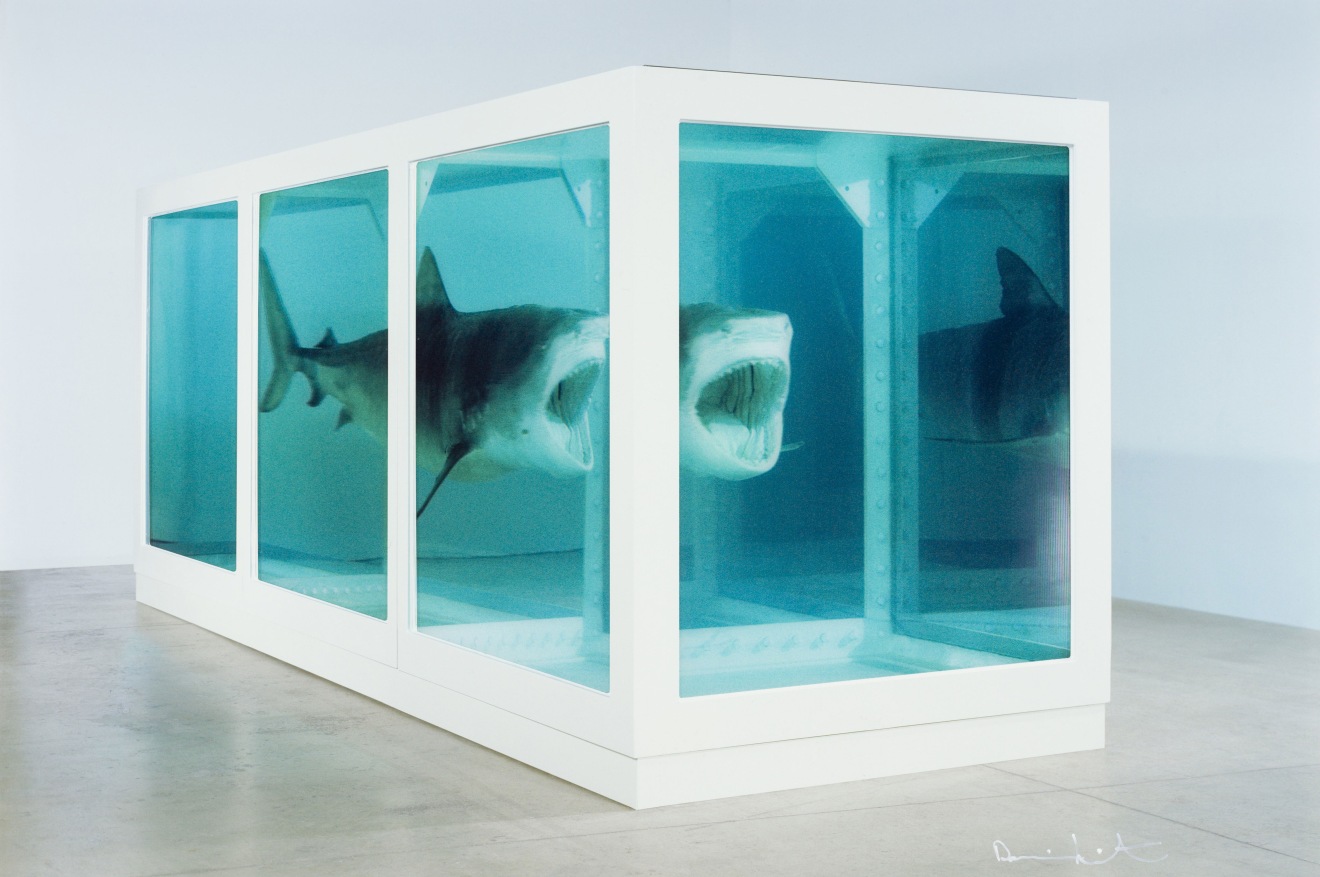"The Physical Impossibility Of Death In The Mind Of Someone Living" is a signed lenticular digital print on PETG plastic produced by renowned contemporary British artist, Damien Hirst. The print available, made in 2013, shows the impressive and infamous sculpture made by Hirst in 1991.
"The Physical Impossibility of Death in the Mind of Someone Living" is a highly famous and controversial artwork created by British artist Damien Hirst in 1991. It is one of the most significant and iconic pieces of the Young British Artists (YBAs) movement, of which Hirst was a prominent figure during the 1990s.
The artwork consists of a 14-foot-long tiger shark preserved in a large tank filled with formaldehyde solution. The shark is suspended in the tank, appearing to swim as if it were alive. Hirst's intention was to present the shark as a spectacle, questioning the relationship between life and death, and challenging the traditional boundaries of art.
The title of the piece, "The Physical Impossibility of Death in the Mind of Someone Living," provokes contemplation about mortality, fear, and the human perception of death. The shark's imposing presence and the use of formaldehyde raise questions about preservation, decay, and the fleeting nature of life.
The artwork was first exhibited at the Saatchi Gallery in London in 1992, and it garnered immediate attention and controversy. It quickly became a symbol of the YBAs and the provocative nature of their art. Some critics praised it for its audacity and ability to provoke thought, while others condemned it as a sensationalist stunt.
Despite the controversy, "The Physical Impossibility of Death in the Mind of Someone Living" remains one of the most recognizable and talked-about artworks of contemporary art history. The original piece was sold to a Stephen A Cohen for an undisclosed amount, but is estimated to have cost upwards of £12 million.
The piece has been interpreted in various ways, with some viewing it as a commentary on mortality and the human condition, while others see it as a reflection of consumerist culture and the commodification of art. Regardless of the interpretation, Hirst's artwork continues to spark discussions about the nature of art, life, and death in the contemporary world. It remains an influential and enduring work that has left a significant impact on the art world and popular culture.
Provenance
Paul Stopler Gallery
Private Collection USA
